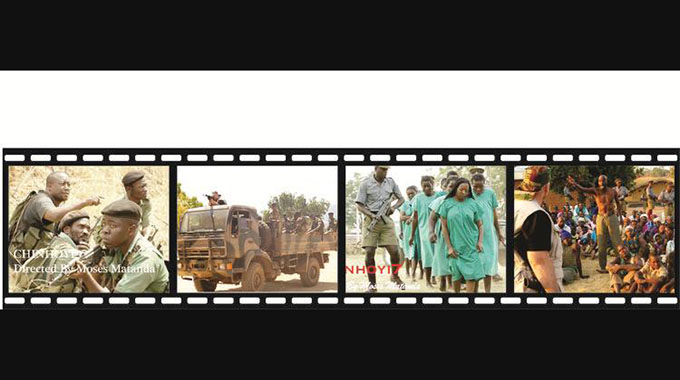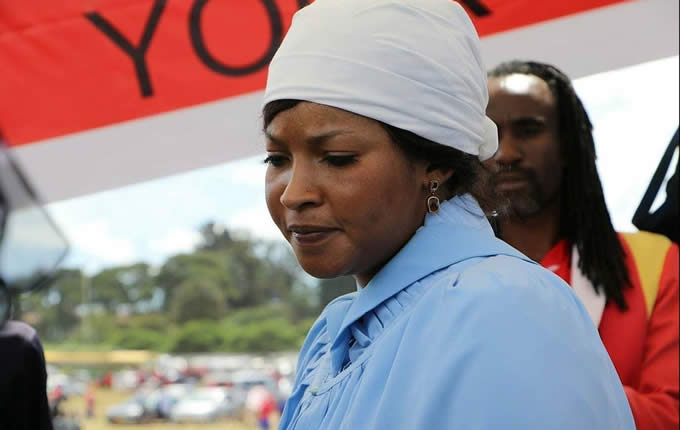Behind the making of ‘Chinhoyi 7’

Godwin Muzari Arts Editor
Local movie “Chinhoyi 7” premières at Ster Kinekor, Borrowdale tomorrow, almost four years since the idea of the production was made public.
In 2014, this publication carried an article announcing the coming of the movie. Writer and producer of the movie Moses Matanda, who was based in Canada then, showed enthusiasm in working on a film that would revisit the liberation struggle.
Based on the Chinhoyi Battle of 1966, where first shots of the Second Chimurenga were fired, the film seeks to correct some misconceptions about the war. It gives an insight into situations that led sons and daughters of the soil abandon their homes and sacrifice their lives for the liberation of the country.
With actors from Canada and United Kingdom coming together with their local counterparts to tell the Zimbabwean story about the struggle, “Chinhoyi 7” promises to be the best movie reflecting on situations and battles of the Second Chimurenga.
While war movies made in other countries are thrilling to many local viewers, “Chinhoyi 7” is likely to stimulate emotional reception. It is not like any other war movie. This is a movie about how Zimbabweans suffered at the hands of colonial masters. It is a movie about how freedom fighters endured some of the harshest conditions of their lives in thick forests far away from their homes.
It is about death. The death of fighters on the war front and death of civilians in villages.
Since 2013, Matanda has worked tirelessly to have the movie on the big screen. And tomorrow his dream comes true when the movie premières.
The Herald Entertainment had a chat with Matanda on Tuesday and he took us through the making of “Chinhoyi 7”.
“When I came up with the idea as I was studying film at a college in Canada. I got in touch with my friends back home and they supported the idea. The idea was inspired by a play that I saw in Canada that misrepresented our history. I felt I was obliged to tell our factual story through film,” said Matanda.
“As I developed the script, I came home and approached senior officials in the army. I presented my case and they gave me blessings to work on the film. They pledged to assist in the making of the movie.”
Matanda said he then contacted his friend and film producer Tawanda Sarireni who is based in the United Kingdom and they arranged a meeting with Zimbabwe’s ambassador to Canada to discuss the film.
“Tawanda flew to Canada and we met with our ambassador Mai Chideya. She also liked the idea and promised to meet influential officials on her next visit to Zimbabwe in order to get support for the movie. When she came home, she approached many ministries and told them about the movie. We got a positive response and I was inspired to work harder towards the movie.”
After completing the script, Matanda used his contacts to get international actors. The cast includes Julia Shaw from Britain and Mori Miyuki from Japan (make-up artiste) as well as Cameron Morton, Greg Brown and Cynthia Stone (all from Canada).
He got in touch with Zimbabwe Broadcasting Corporation (ZBC), which assisted him in identifying local actors for the movie.
Notable local names in the film include Eddie Sandifolo, Albert Nyathi and Fungisai Zvakavapano-Mashavave.
As consultations with the Zimbabwe National Army continued, 44 soldiers, a helicopter, guns and bombs were availed for the production.
Matanda also approached Zimbabwe Republic Police (ZRP) and got to work with 21 police officers. The police also made Rhodesian police uniforms for the production and availed trucks, a bus, fuel and guns.
Also supporting the production was the Zimbabwe Prisons and Correctional Services (ZPCS). The cast got prisoners’ garbs and ZPCS facilitated the shooting of prison scenes of the movie at Chinhoyi Prison where real prisoners mixed with actors during shooting.
“Support from these institutions made some scenes easy for us. We shot prison scenes in a real prison and prisoners participated in the movie.
Most of them were happy to appear in the movie because it was a time of entertainment for them. Our actors ate prisoners’ food and everything appeared real.
“Soldiers already know their drills and shooting battlefront scenes meant that I would simply tell them what we expected and they would do it like a real war situation and our actors followed what experienced soldiers were doing.
“It was the same case with the police. Police officers did what they do every day and put in a Rhodesian feel to it. It made most scenes appear so real. Having real soldiers, policemen and prison officers mean that the scenes in the movie will portray the actual message that we want to send out in a practical way.”
Turning to battlefield segments, Matanda said the scenes resembled real war situation and some people that came to witness “Chinhoyi 7” shooting at times panicked as sounds of gunfire and bomb blasts filled the air.

They went to the real location of the 1966 Chinhoyi Battle (at Mashonaland West Provincial Heroes Acre) for battle scenes. Matanda said a gully from which the seven fighters fired their shots in 1966 is still there close to the heroes’ acre and they used it for their battle in the movie.
Besides Chinhoyi, the movie was also shot in Harare, Bulawayo, Victoria Falls, Honde and Concession.
In Harare, the late Kiki Divaries played an important role in the movie when she agreed to have her house used as Ian Smith’s house in the movie. Matanda saluted Kiki for the passion that she showed towards the movie.
“She was an amazing woman. She treated the production like her own project. She did not allow us to bring our food. She cooked for the cast and was so supportive. We spent almost a month using her house and she would hug every actor after shooting to encourage them and appreciate their efforts. It is unfortunate she is no longer here to see what her contribution has done to the movie.
“We also used Ambuya Mavis Mutseyekwa’s house in Mufakose for our ghetto scenes and she would share war stories with us and encouraged us to tell the story to younger generations.”
Scenes in concession were made to show village set-ups during the war. More than 100 villagers participated in the movie and touching scenes about how the masses suffered during the struggle were done in Concession.
Other battlefront scenes were done in Honde Valley and Matanda said they also wanted to show the scenic mountains in the area as a subtle way of promoting the country’s tourist attractions. The same strategy was used for scenes that were shot in Victoria Falls.
“‘Chinhoyi 7’ is a touching movie. People should come prepared for emotional scenes. They should also come prepared for laughter because we diluted touching acts with some humour. All in all, we hope the movie will tell the Zimbabwean story about what sparked the war. It will show people some harsh realities of war.”










Comments